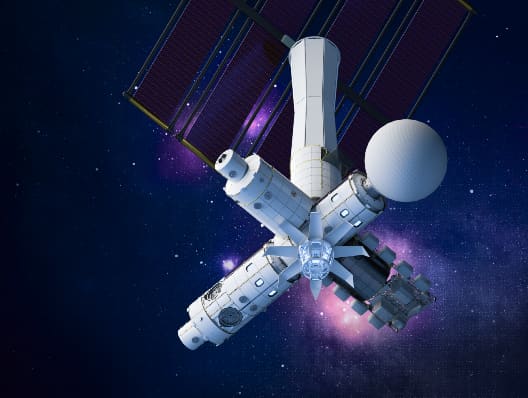The producers of Tom Cruise’s planned space movie on Thursday announced plans to attach a studio to the space station in development by Houston-based company Axiom.
U.K.-based studio Space Entertainment Enterprise, co-founded by producers Elena and Dmitry Lesnevsky, contracted Axiom to build the module. Called SEE-1, the module would be “the world’s first content and entertainment studios and multi-purpose arena in space.”
SEE-1 is scheduled to launch in December 2024. It will attach to Axiom’s first module that the company plans to connect to the International Space Station in September 2024.
“Adding a dedicated entertainment venue to Axiom Station’s commercial capabilities in the form of SEE-1 will expand the station’s utility as a platform for a global user base and highlight the range of opportunities the new space economy offers,” Axiom president and CEO Michael Suffredini said in a statement.
A Space Entertainment Enterprise spokesperson said in an email to CNBC that the company is “in production on the upcoming Tom Cruise movie, which will be filmed in space.” Cruise has yet to comment publicly on the space film, but NASA announced in 2020 that the agency is working with the actor on the movie.
Financial details of the studio’s contract with Axiom were not disclosed, and little is known about Cruise’s unnamed project – including how much it will cost.
“The company is currently in discussions with investors and commercial partners on the project with a further fundraising round planned shortly,” Space Entertainment Enterprise said in a press release.
The SEE-1 module is an inflatable module, according to Axiom, which will have a diameter of nearly 20 feet. Using inflatable modules is an increasingly popular approach of private companies developing space stations to build large living areas, due to the advantage of launching in a smaller form factor and then expanding to a greater volume once in space.
Defunct space company Bigelow Aerospace connected its inflatable BEAM module to the International Space Station in 2016, which NASA continues to use for cargo storage on the research laboratory.
Axiom previously won a $140 million NASA contract to attach its first habitable module to the ISS. The company then plans to detach its modules before the ISS retires, to create the free-flying Axiom Station.
